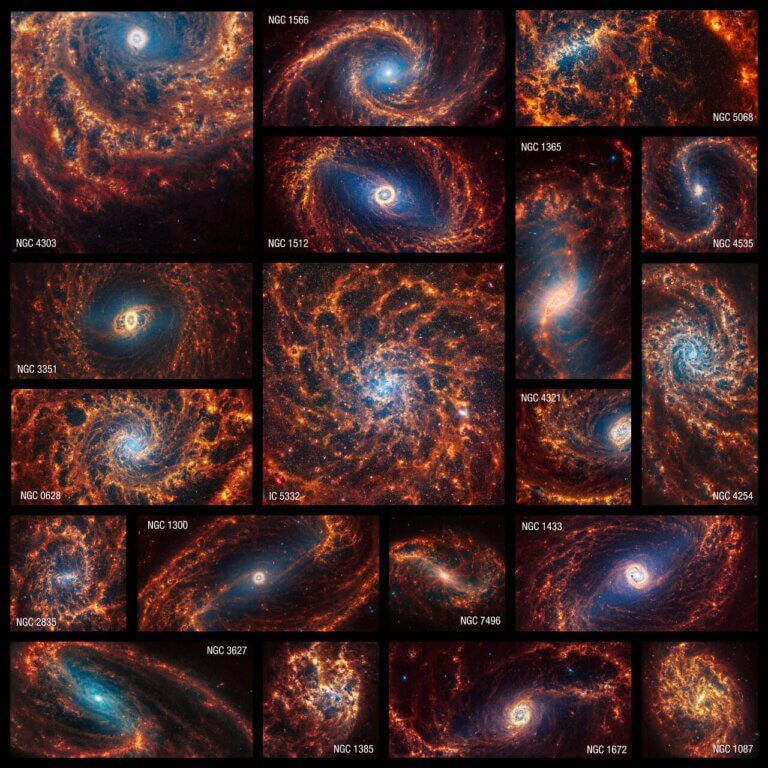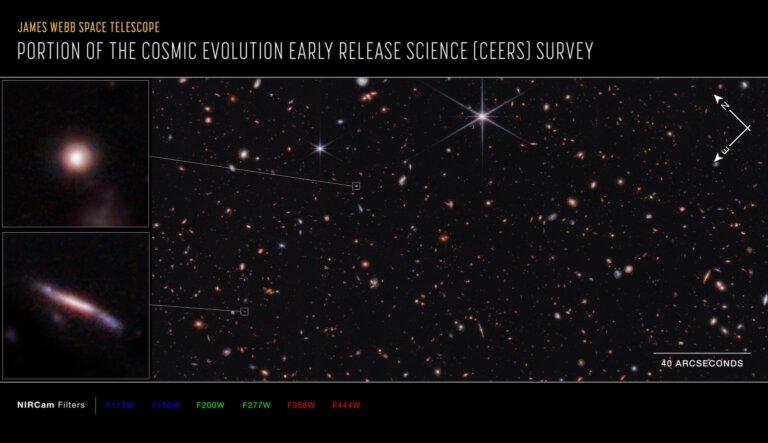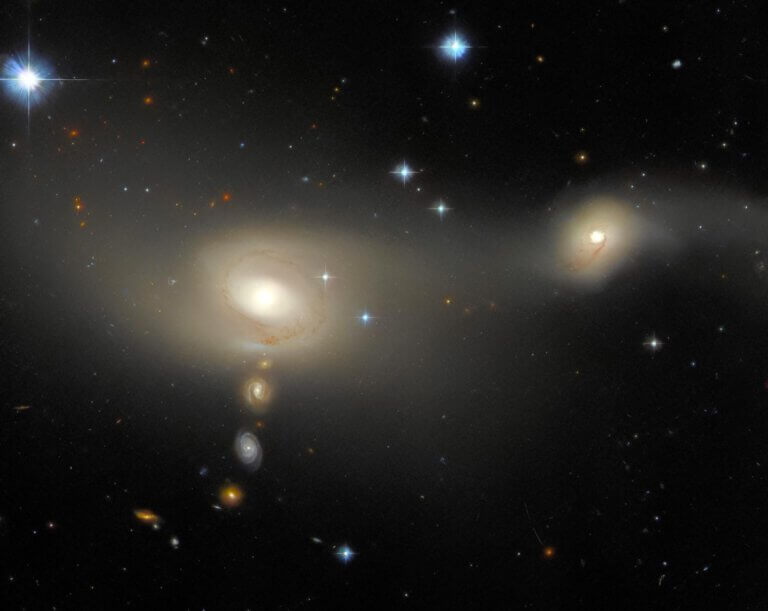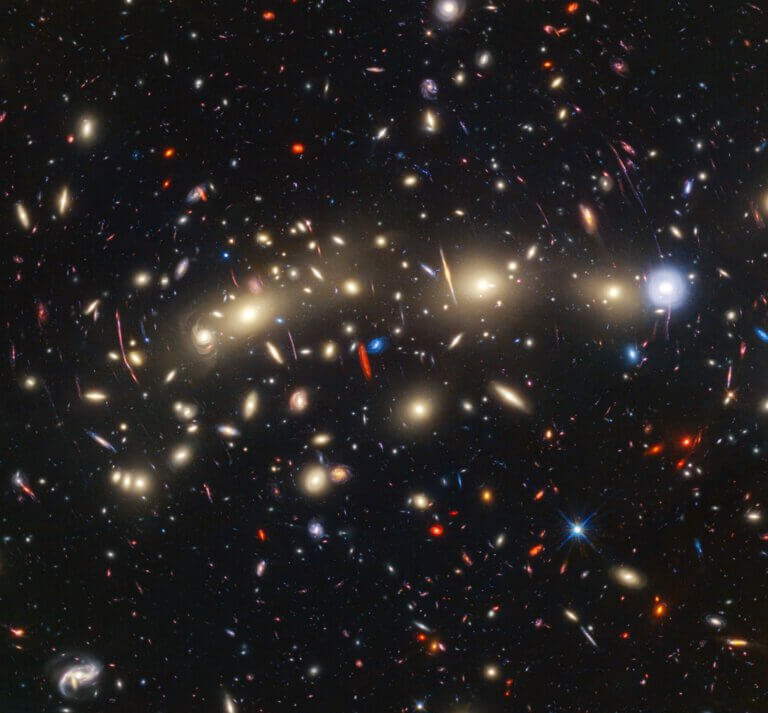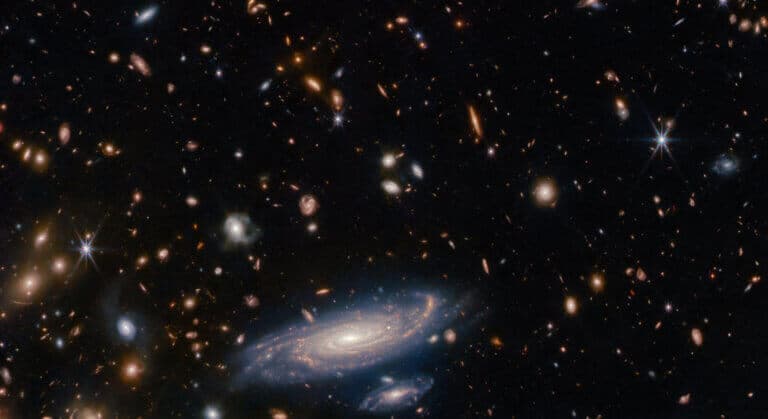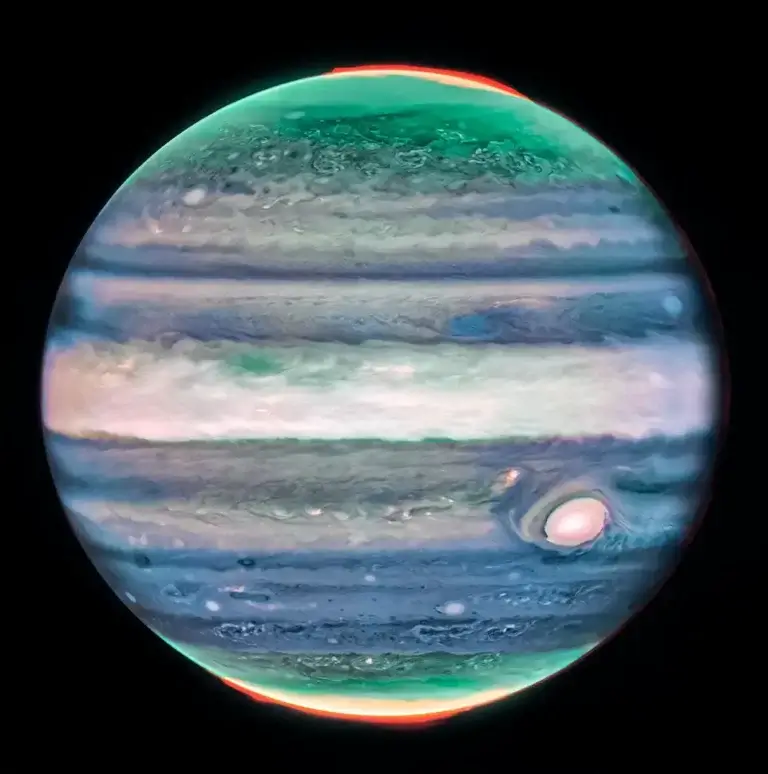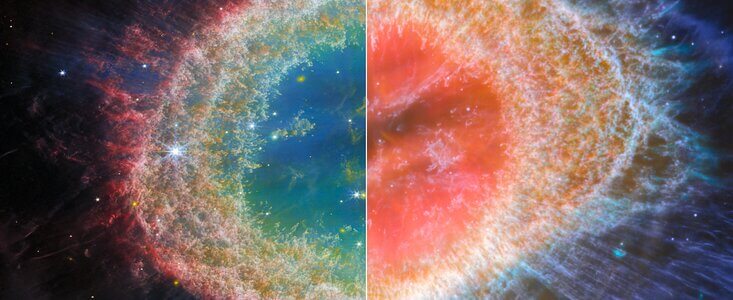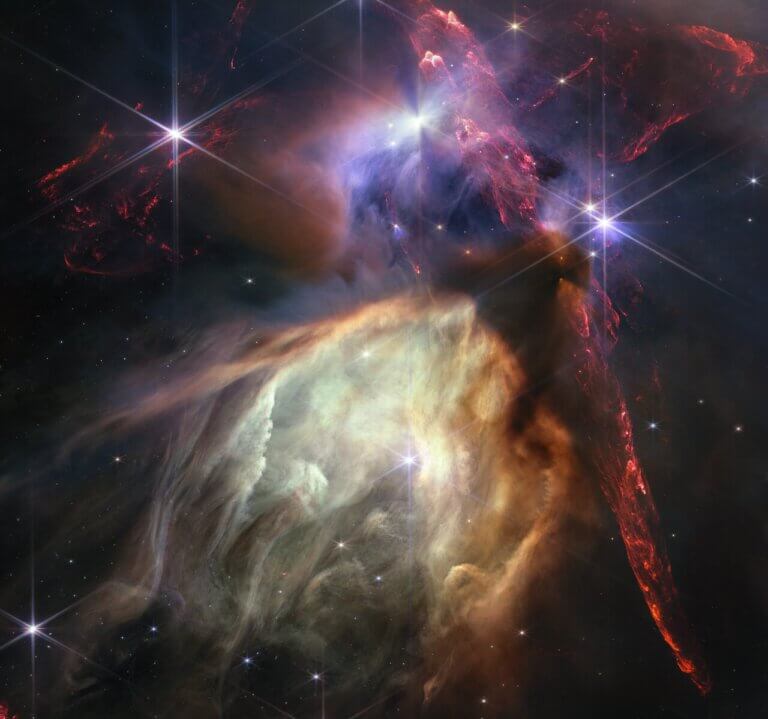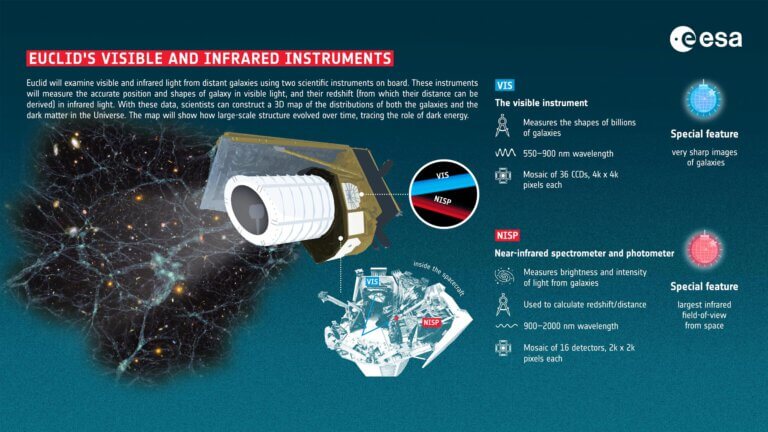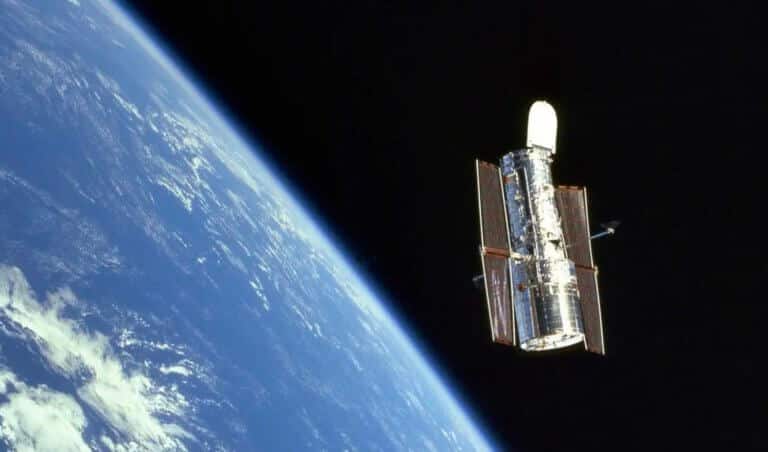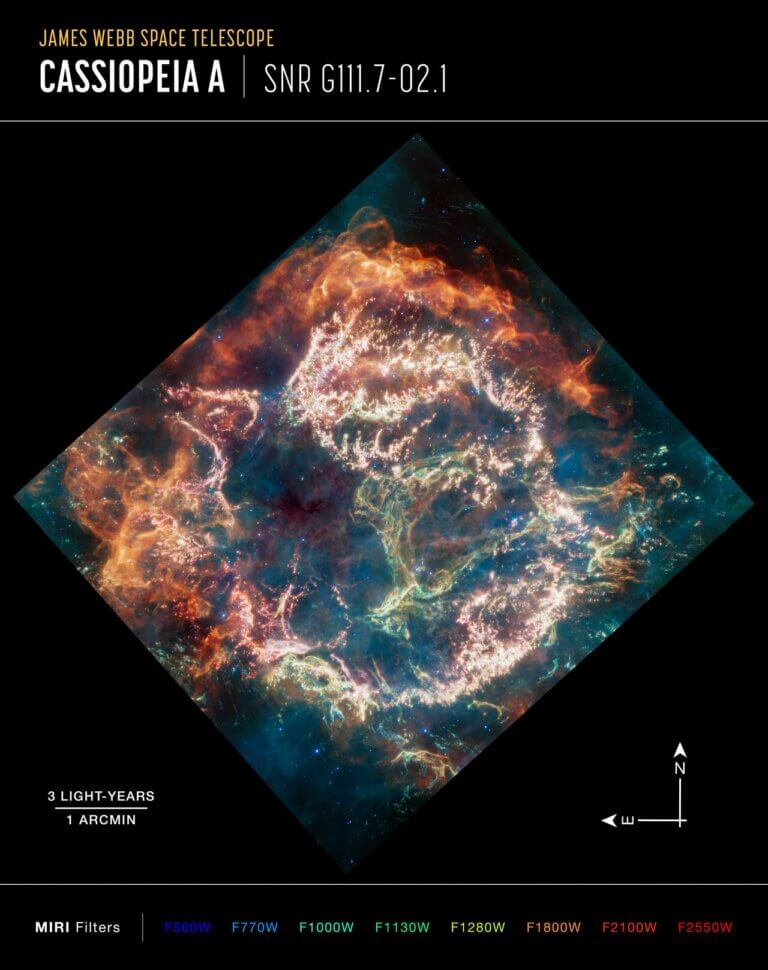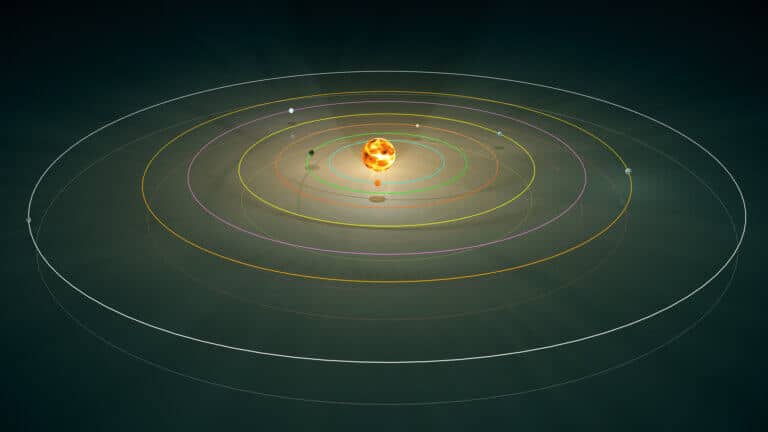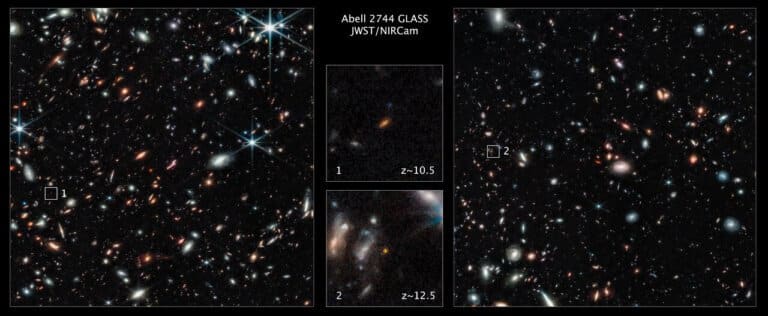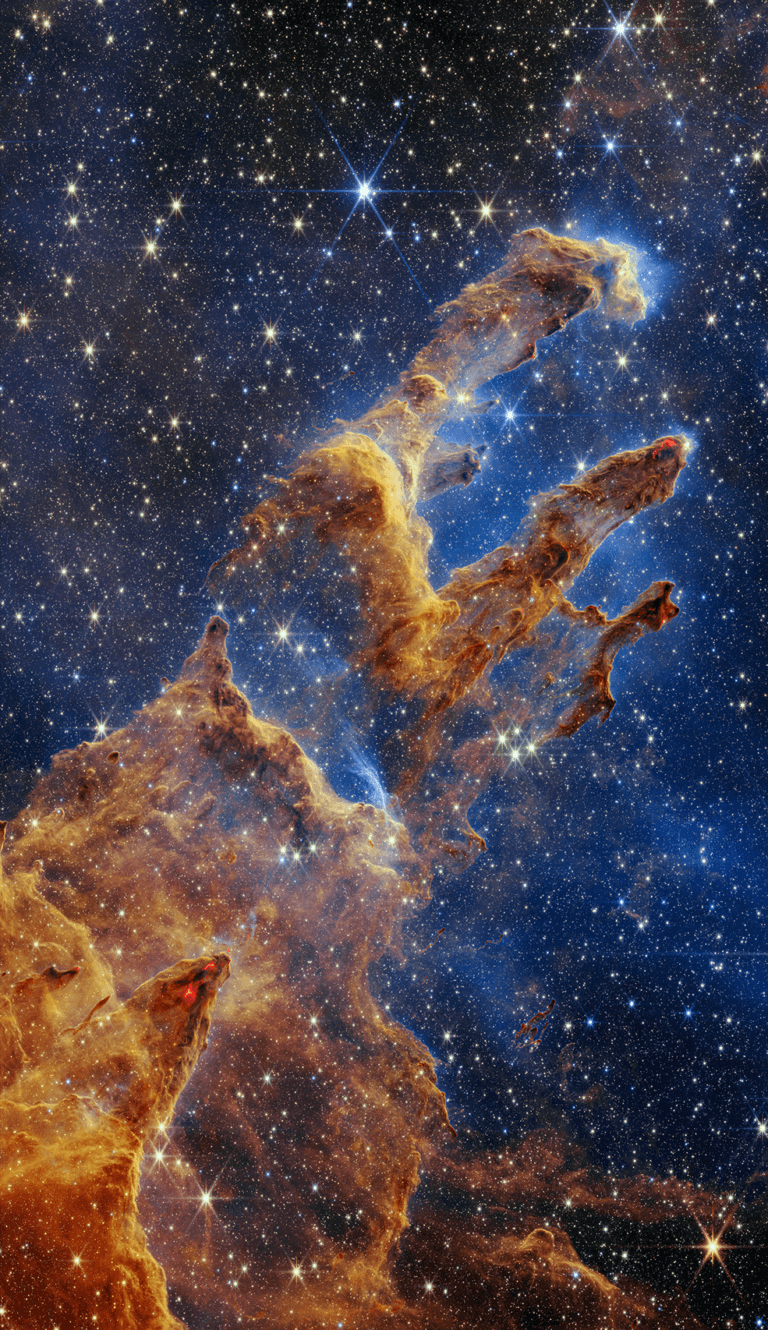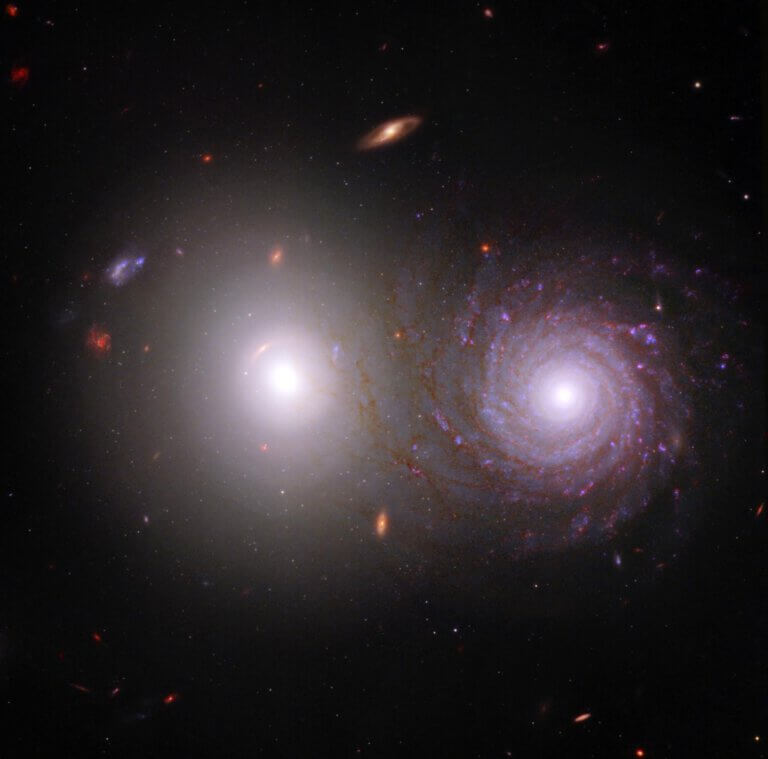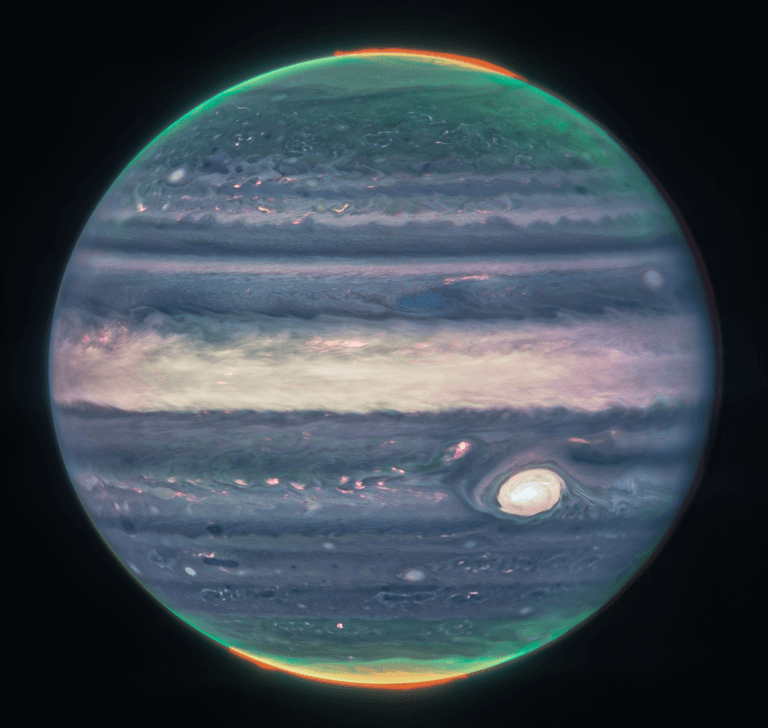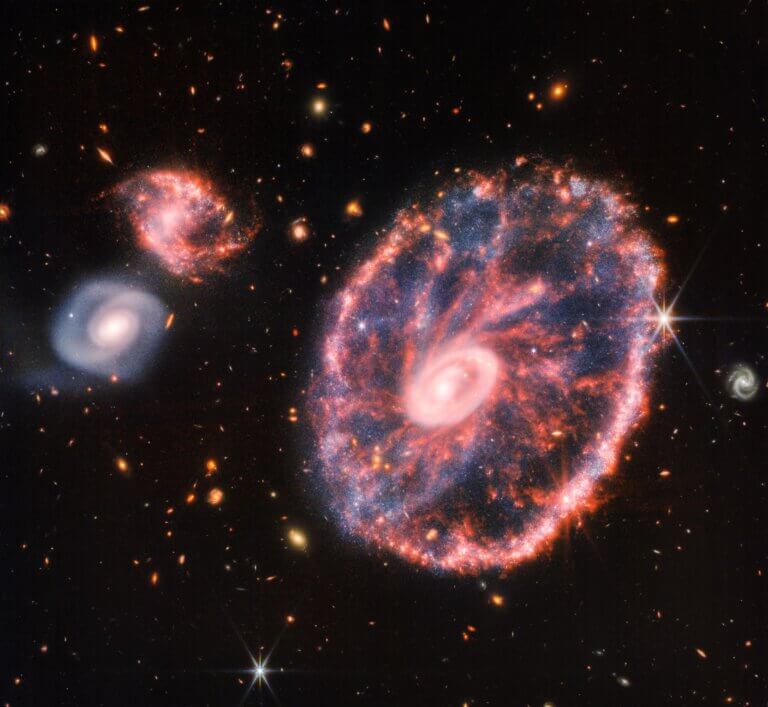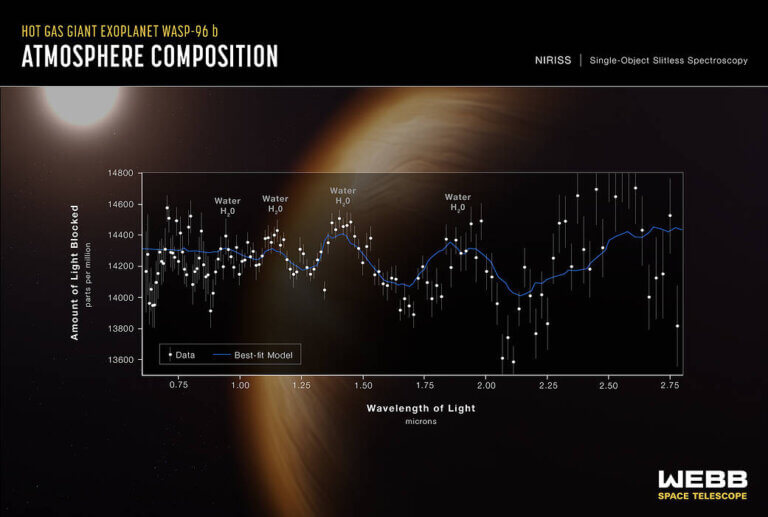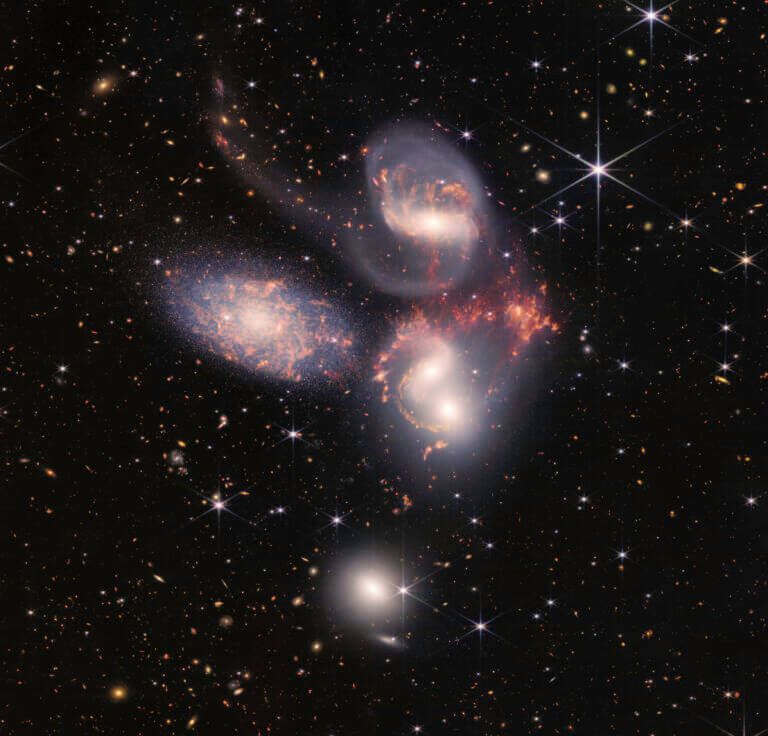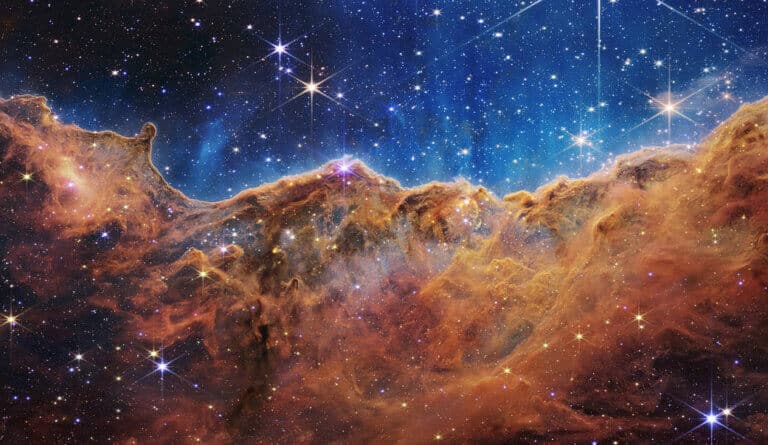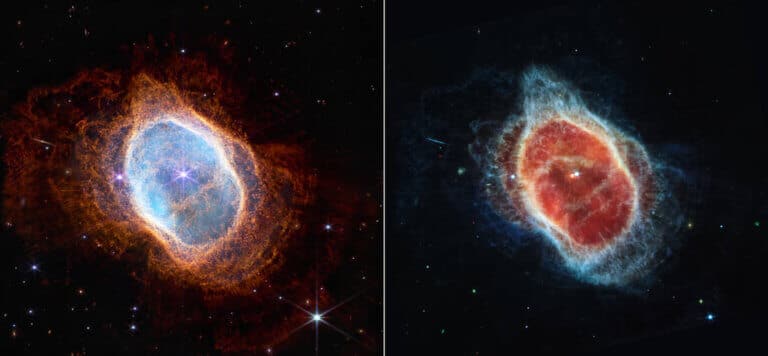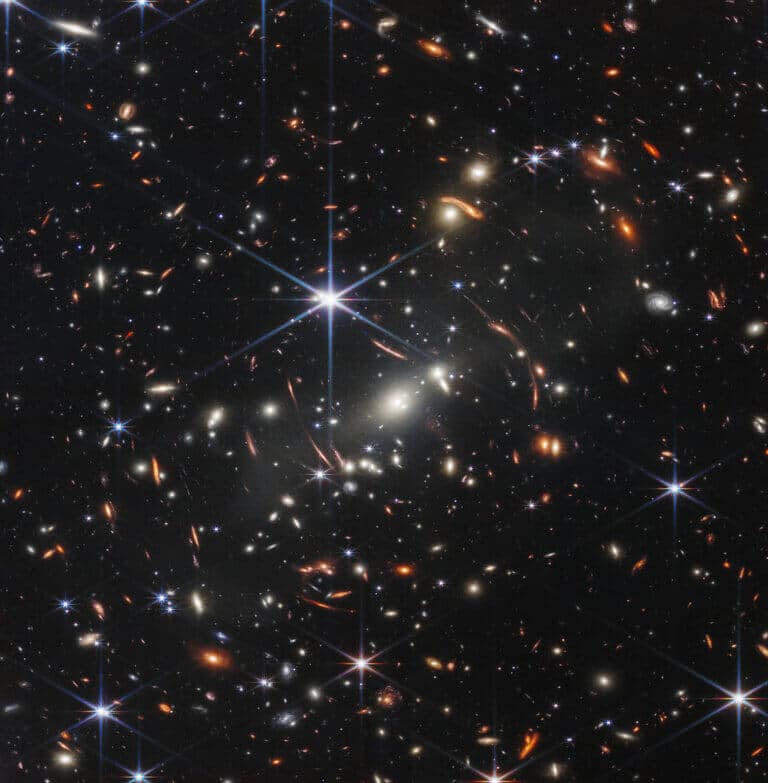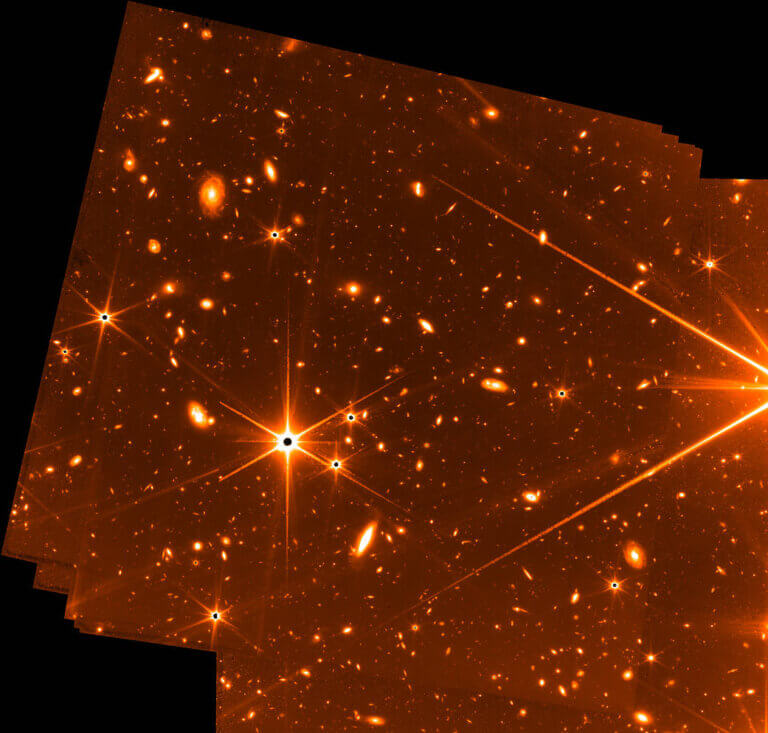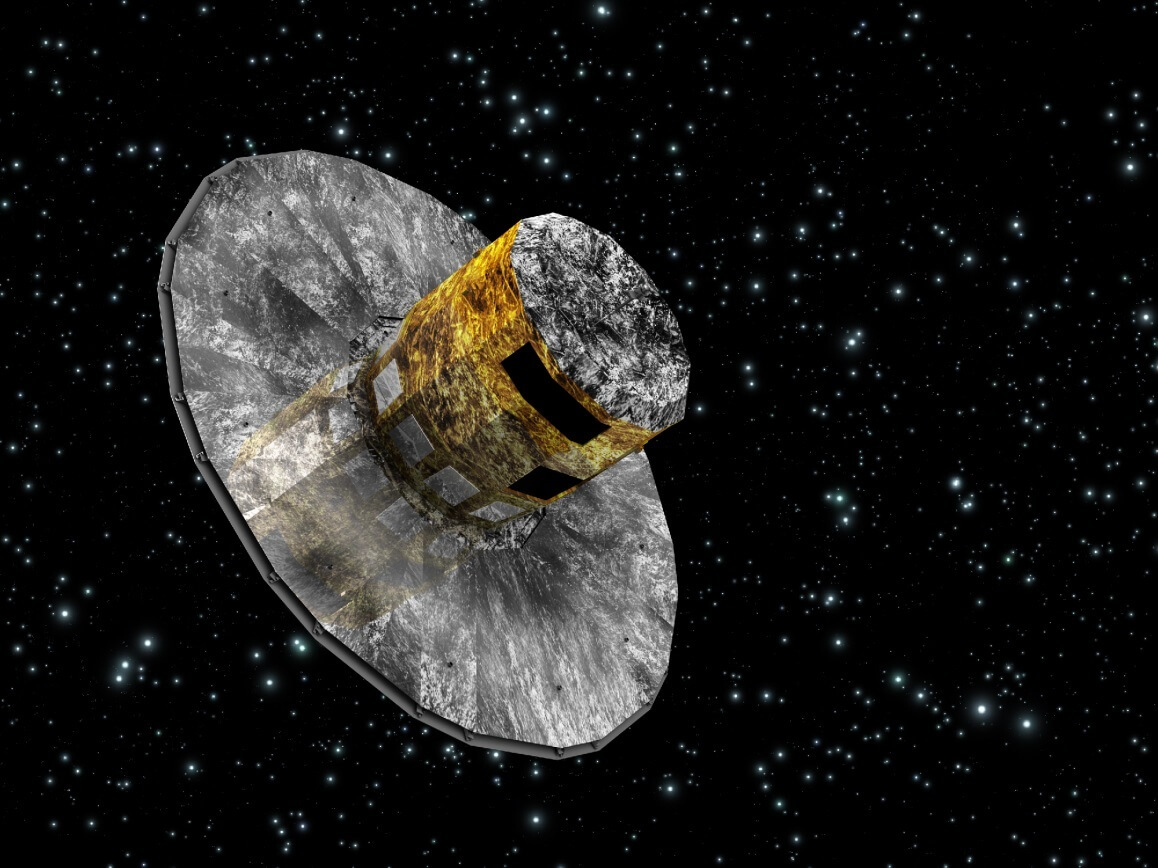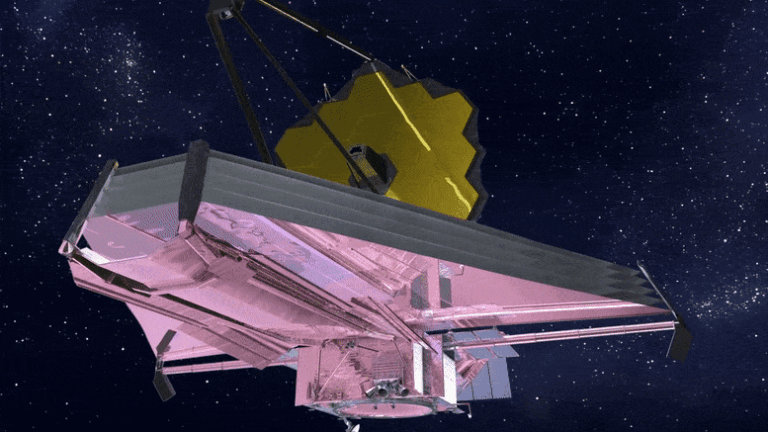Hayadan > Space and astronomy > astronomy > space telescopes
space telescopes
- Avi Blizovsky
- January 31, 2024
- 3 תגובות
These are relatively close galaxies that face the Earth. The research reveals new details about the way galaxies are formed
- Avi Blizovsky
- January 23, 2024
- 4 תגובות
The first galaxies were much less developed than the spiral and spherical galaxies that exist today, which are actually the result of mergers, both because of the stage of development but also because of the conditions that prevailed at the time
- Avi Blizovsky
- December 20, 2023
- 2 תגובות
Two of these galaxies close to each other are a rare type of emission line galaxies, because they are undergoing a massive process of new star birth. The others are at different distances but line up nicely in this Hubble shot
- Avi Blizovsky
- December 5, 2023
- 6 תגובות
The stunning image represents one of the most comprehensive views of the universe ever taken, revealing a rich landscape of galaxies along with more than a dozen variable objects discovered for the first time
- Avi Blizovsky
- December 1, 2023
- 10 תגובות
- Avi Blizovsky
- November 5, 2023
- One response
The James Webb Space Telescope discovered a previously unseen jet stream in Jupiter's atmosphere. Similar phenomena have been observed in Saturn, and both may be related to temperature variations in the atmospheres of the gas giants
- Avi Blizovsky
- August 24, 2023
- 3 תגובות
The Ring Nebula, formed by a star shedding its outer layers, is a classic example of a planetary nebula and is also relatively close to us.
- Avi Blizovsky
- July 14, 2023
- No comments
From our own cosmic backyard in the Solar System to distant galaxies toward the dawn of time, the NASA/European Space Agency/CSA James Webb Space Telescope has lived up to its promise to reveal the universe like never before in its first year of scientific activity. To celebrate the end of a year A successful first, a new Web image has been released of a small star-forming region in the Rho Ophiuchi cloud complex
- Avi Blizovsky
- July 5, 2023
- No comments
On July 1, 2023, the Euclid space telescope was successfully launched aboard Space-X's Falcon 9 rocket. It aims to explore the mysterious components of the universe, dark matter and dark energy
- Avi Blizovsky
- May 16, 2023
- 3 תגובות
Astroscale's collaboration with the Momentos company offers NASA a commercial solution that will allow the famous satellite - which recently celebrated its 33rd birthday - to be attached and towed to an orbit that will also be cleaned of space debris
- Avi Blizovsky
- April 12, 2023
- 4 תגובות
Webb recorded what remained after the death of a star only 11 thousand light years away from us. It is a relatively new supernova - only 350 years old
- Avi Blizovsky
- December 18, 2022
- 6 תגובות
A computerized system classifies the atmospheres of planets outside the solar system. and determines which of them are capable of sustaining human settlement in the future
- Avi Blizovsky
- November 18, 2022
- 9 תגובות
One of these galaxies is observed as it appeared about 300 million years after the Big Bang and shines much brighter than expected. This figure now makes researchers estimate that the first galaxies were formed 100 million years after the Big Bang. "It's like an archaeological dig, when you suddenly find a lost city or something you didn't know about," said one of the researchers
- Avi Blizovsky
- October 21, 2022
- No comments
NASA's James Webb Space Telescope captured a rich and highly detailed view of the "Pillars of Creation." A region where new stars form within dense clouds of gas and dust that was previously captured in an iconic image by the Hubble Space Telescope at the start of its operation and returned to after upgrades, along with Strong landmasses
- Avi Blizovsky
- October 10, 2022
- One response
A combination of photographs taken by the two large space telescopes in partially overlapping wavebands made it possible to identify new details about the role of interstellar dust in connections between neighboring galaxies
- Avi Blizovsky
- August 24, 2022
- One response
- Avi Blizovsky
- August 7, 2022
- 7 תגובות
Webb's instruments reveal new details about star formation
- Avi Blizovsky
- July 12, 2022
- 4 תגובות
The light spectrum - which contains information about the composition of a planetary atmosphere 1,150 light years away - reveals a clear signature of water * The strength of the signal that Webb detected hints at the significant role that the telescope will play in the search for potentially habitable planets in the coming years
- Avi Blizovsky
- July 12, 2022
- No comments
The proximity of four of the five Stefan galaxies to each other (the fifth only seems close) allows astronomers to ignite galactic mergers and intergalactic reactions. And also how black holes affect the flow of matter between galaxies
- Avi Blizovsky
- July 12, 2022
- No comments
"Cosmic Cliffs" images show Webb's cameras' ability to peer through cosmic dust, shedding new light on how stars form * Webb's technology could help watch the elusive process of star formation
- Avi Blizovsky
- July 12, 2022
- No comments
NASA's James Webb Space Telescope has revealed details of the Southern Ring Nebula that were previously hidden from astronomers. * For the first time, the second star in the binary system that one of its members has exploded can be clearly seen * First article in the series
- Avi Blizovsky
- July 12, 2022
- 2 תגובות
- Sparrow from Marom
- July 11, 2022
- 3 תגובות
Tonight, July 12, starting at midnight, the American space agency NASA will reveal the first scientific photographs of this advanced space telescope, at a press conference chaired by US President Joe Biden, and NASA head Bill Nelson
- Avi Blizovsky
- June 19, 2022
- One response
- Avi Blizovsky
- March 24, 2022
- One response
So far, the preparations for the operation of the James Webb Space Telescope are progressing as planned

